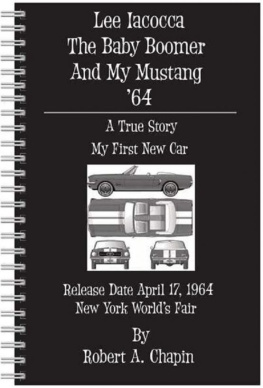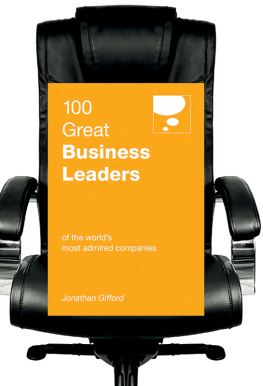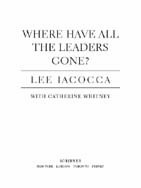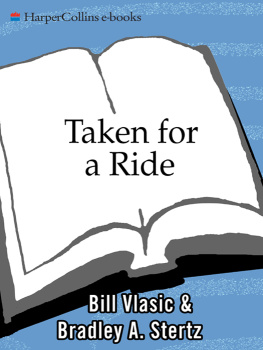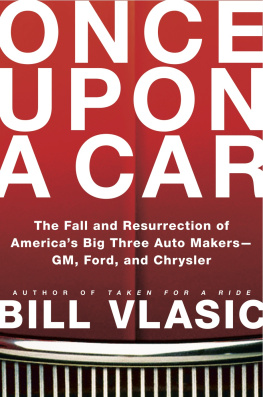THE PHENOMENAL WORLDWIDE BESTSELLER
IACOCCA: AN AUTOBIOGRAPHY
His flamboyance as the chairman who saved Chrysler Corp. from bankruptcy has made him the business worlds leading celebrity. Many people admire Iacocca for his marketing savvy and management expertise. But it is probably his knack for plain talk that strikes the most responsive note among his fans. The book, written in collaboration with journalist-lecturer William Novak, surges from personal history to management tips to lectures on such pet Iacocca topics as auto safety, labor costs, and industrial policy. It is vintage Iacocca.
Business Week
The story of the resurrection of the Chrysler Corporation is exciting and well handled by Mr. Iacocca There are plenty of clues to Mr. Iacoccas management methods. Hes a good listener, but when the times come to stop listening and act, he becomes a decisive commander. People both like him and respect his talents so he can attract other talented people like a magnet. And he has the all-important leadership quality of humility: the reason your employees follow you, he writes, is not because youre providing some mysterious leadership. Its because youre following them. Every mother who has sons or daughters headed for a business career will want to give them Iacocca for Christmas.
The New York Times Book Review
Iacocca reads like Iacocca talks the voice is unmistakable. He is a big guy (6 ft. 1 in., 194 lbs.), a driven guy, an earthy, passionate, volatile, funny, and profane guy, a talkative guy who tells it like it is, who grabs for gusto, who damns the torpedoes, and plunges full-speed ahead.
Time Magazine
Lee Iacocca is an American hero. Iacoccas candid analysis of what is right and wrong with the auto industry, big labor, government, and America is insightful and refreshing Iacocca provides readers with an unusual insight into the inner workings of one of modern Americas great characters.
Philadelphia Inquirer
Engaging. Mr. Iacoccas book is a profile of a strong-minded corporate chief who moves on the balls of his feet Mr. Iacocca drops some little bombshells that are certain to get attention in Detroit.
The Wall Street Journal
Iacocca describes how he assembled his team of disgruntled ex-Ford men and retired executives, cajoled his suppliers and battled his banks, cut and slashed at the company, wrenched a billion-dollar loan guarantee out of the federal government, became a media star, rolled out his K-cars, and saved the day. He did just that, by the way.
Chicago Tribune
Apparently the age of American industrial heroes in the computer age is not deadat least not while there is a Lee Iacocca story like this one This book is his story and its a dillyand here let me add a word of commendation to collaborator William Novak for letting Iacocca speak in his own true voice throughout. Iacoccas is one of the great success stories of the decade and will be enjoyed by all his readers.
John Barkham Reviews
IACOCCA
A Bantam Book
PUBLISHING HISTORY
Bantam hardcover edition published November 1984
Bantam mass market edition / July 1986
Bantam trade paperback edition / May 2007
Published by
Bantam Dell
A division of Random House, Inc.
New York, New York
All rights reserved
Copyright 1984 by Lee Iacocca
Library of Congress Catalog Card Number: 84-45174
Bantam Books and the rooster colophon are registered trademarks of
Random House, Inc.
eISBN: 978-0-307-78868-9
www.bantamdell.com
v3.1
To my beloved Mary,
for your courage
and your devotion to the three of us.
CONTENTS
ACKNOWLEDGMENTS
I ts customary for an author to thank all the people who helped him with his book. But since this is an autobiography, I want to begin by thanking some of the people who helped me with my lifemy true friends who stuck by me when my world was falling apart: Bishop Ed Broderick, Bill Curran, Vic Damone, Alejandro deTomaso, Bill Fugazy, Frank Klotz, Walter Murphy, Bill Winn, and Gio, my barber. Also my doctor, James Barron, who helped me keep mind and body together.
I want to thank the gang that came out of cozy retirement to give me a hand at ChryslerPaul Bergmoser, Don DeLaRossa, Gar Laux, Hans Matthias, and John Naughtonand the young Turks like Jerry Greenwald, Steve Miller, Leo Kelmenson, and Ron DeLuca, who left good and secure jobs to pitch in and help save a dying company.
In my thirty-eight years in the auto business, I was blessed with three secretaries who really made me look good. The first was Betty Martin, a woman so talented she made many of the Ford officers look bad by comparison. The second, Dorothy Carr, left Ford the day I was fired and came over to Chrysler out of sheer loyalty, even though she put her pension in jeopardy. And the third, my present secretary, Bonnie Gatewood, a veteran Chrysler employee, ranks right up there with them.
I am grateful to my old friends from Ford, those precious few who stayed my friends during the dark days: Calvin Beauregard, Hank Carlini, Jay Dugan, Matt McLaughlin, John Morrissey, Wes Small, Hal Sperlich, and Frank Zimmerman.
I want to thank Nessa Rapoport, my editor, who made sure this book would have no recalls; the people at Bantam Books who worked so hard, particularly Jack Romanos, Stuart Applebaum, Heather Florence, Alberto Vitale, and Lou Wolfe; and my invaluable collaborator, William Novak.
And, it goes without saying, my daughters, Kathi and Lia, who were really my whole life and still are.
INTRODUCTION TO THE PAPERBACK EDITION
N obody was more surprised than I was when this book jumped to number one on the best-seller list the first week it was published. People started asking me how a book with no sex, no violence, and no spies could sell so well. I honestly didnt know, and I was supposed to be a marketing genius.
After all, this is just a story about a kid from a good immigrant family who studied hard and worked hard, who had some big successes and some big disappointments, and who made out fine in the end because of the simple values he learned from his parents and teachers, and because he had the good luck to live in America.
This is not the kind of book that is supposed to set publishing records, but it did.
I found out why by reading my mail. I started getting as many as five hundred letters a day, and I grabbed a pile as I left the office every night.
I discovered that the secret to the book was simple: Most people who wrote had lived parts of my life themselves. I wasnt writing about a strange place like the bottom of the ocean or the surface of the moon; I was writing about somewhere theyd all been.
I got a lot of letters from people who, like me, had been fired after years of faithful service to one company, or who had recently lost a loved one.
Some people wrote and told me about how their parents had come through Ellis Island and built a great life in America (and many included checks to help restore the island and the Statue of Liberty). They told me about the debt they owed to the hard work and sacrifice of their parents, and about their determination to make things even better for their kids.
I got letters from people who said how much they loved America, but how scared they were that Americas fiscal and trade policies were going to lead to disaster.
I heard from school kids and from people in their eighties, from corporate presidents and unemployed workers. The book seemed to touch all of them, in one way or another.




